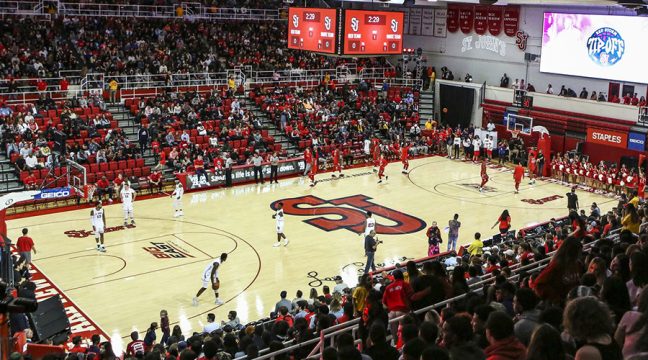From his first days skiing at five-years-old to living the life of climbing bum in Boulder, CO and working for outdoor retailers and brands, Keith Patterson has never left the outdoors.
By David Clucas
Like so many of us in the industry, Patterson lives and works his passion, and it’s paid off.
In January 2016, Patterson was promoted to President of Bergans USA, the U.S. arm of European snowsports and outdoor brand Bergans of Norway. He succeeded his long-time mentor Pat Loomis, who retired after 37 years in the industry.
Patterson shares with SGB what he’s learned along the way and the future he sees for the ever-evolving industry.
Congrats on the new post! Tell us a little about your background and how you got here. Thanks! As with most of us, it started with my parents. I was about five years old and my folks took me skiing for the first time. That was the start of many winter ski trips, which grew into skiing on Mt Washington, and summer camping and canoe trips in the Northeast. Then in University at Boulder, I got a taste for rock climbing. After a few years of being a ski and climbing bum in Boulder, I wanted to make my love of the outdoors more than just a pastime, and as an English major, I was well prepared for a career in retail.
I spent a number of years working for outdoor retailers as a hardgoods, technical apparel, and footwear buyer. While at PlanetOutdoors.com, one of the first outdoor e-commerce sites, I met Pat Loomis. Soon after PlanetOutdoors was purchased, Pat was starting a wholly-owned subsidiary for Deuter packs, and tapped me to be his national sales manager. In 2009, I had the opportunity to join Dynafit/Salewa and get back to my skiing roots, as well as expand my market knowledge with ski hardgoods and footwear. Then in 2012 Pat and I again had the opportunity to work together and start the Bergans of Norway subsidiary for North America. I, of course, jumped at the opportunity.
Sounds like Pat was quite the mentor. What have you learned the most from him? He is truly a great mentor and friend. He’s been a huge influence on my career, and all I have learned from him is too much to list. But I think one of the most important things Pat taught me is to hire the right people and give them the direction and freedom to do their job. Treating your employees fairly is one of the most important things in this industry, or any industry. In addition, Pat is there with a constant reminder, that while this is a fun industry to be in, it is still work, and if it were easy, everyone would be doing it.
Over the past few years, the ski hardgoods category has seen a nice boost from more backcountry and AT enthusiasts. How has that trend translated on the softwoods side? It’s really great to see this category grow as a whole. As a Norwegian brand, our roots are in the backcountry, hiking or skiing. We’ve had a focus on gear specific for backcountry users for years, and with the growing consumer base, this allows us to expand our offering of backcountry specific outerwear and insulation. It also opens up a lot of cross-over designs for use both in-area and backcountry – jackets and pants that are light and packable for use in the backcountry, yet durable and stylish for the piste.
Beyond category-specific trends, you’ve also told us that you’ve noticed a broader change in consumer buying habits. What are you seeing and how do you think brands and retailers will be forced to adjust? There is a growing trend towards “just in time” buying. The trend used to be consumers would have a winter holiday trip planned for December or January, so they would go to their local retailer in September or October and get their new gear at the start of the season. Now we are seeing consumers hold off until maybe a few weeks before their trip to upgrade their jacket or other gear. As this trend grows, the retail/wholesale buying cycle will need to adjust. Buyers and manufacturers will need to realize this and work together to find the best solution for consumers.
I am also seeing a continuing trend, and expectation, towards omni-channel – a continuous and universal shopping experience for a brand. The challenge becomes how do brands and retailers work together to offer this experience so specialty retail in the outdoor and ski markets continue to service our customers in the best way possible and remain viable.
Working for a European-based brand, what do you see as the biggest differences between their and our market here in the U.S.? I am one to always look for similarities and the positive. One of the best things about the brands I have worked for is they are all passionate about nature and getting people outside to share their enjoyment. I do see the geographic nature of Europe playing a big role in the attitude towards the outdoors. Hiking and skiing are a way of life for most Europeans. A rucksack, not a book bag, is something almost all Europeans own. Even if they are not “hikers” they still go for walks in the woods. This is evident in the number of specialty dealers, as well as large chain dealers throughout Europe. Just about every town has a local outdoor or ski shop, whereas in the States, we are more spread out and so are our dealers.
Why do you think we’re seeing more European outdoor and ski brands coming to the United States? I think the outdoor market is becoming a global market. As we are seeing more European brands come into the U.S. market, more American brands are entering into the EU market. It’s natural growth for a brand to extend from its home market in Europe to the U.S., and vice versa.










